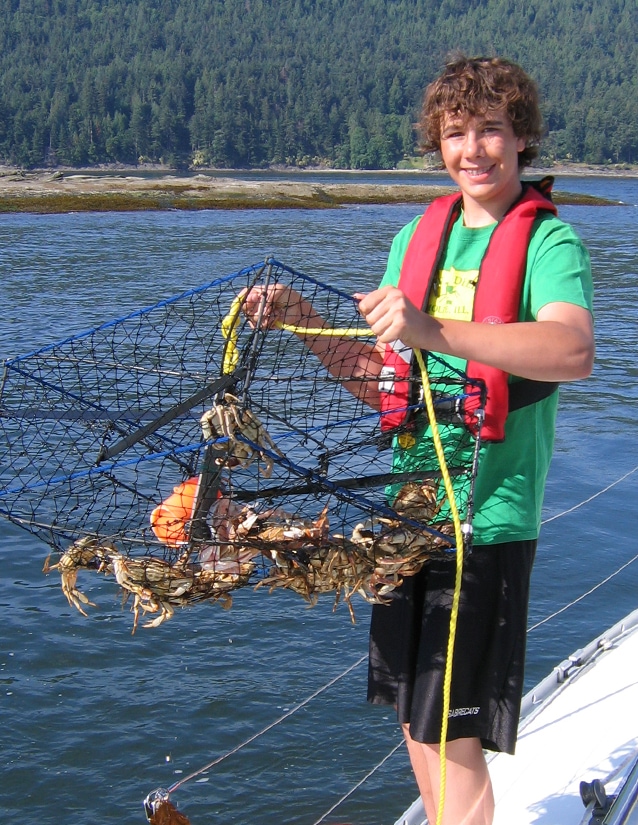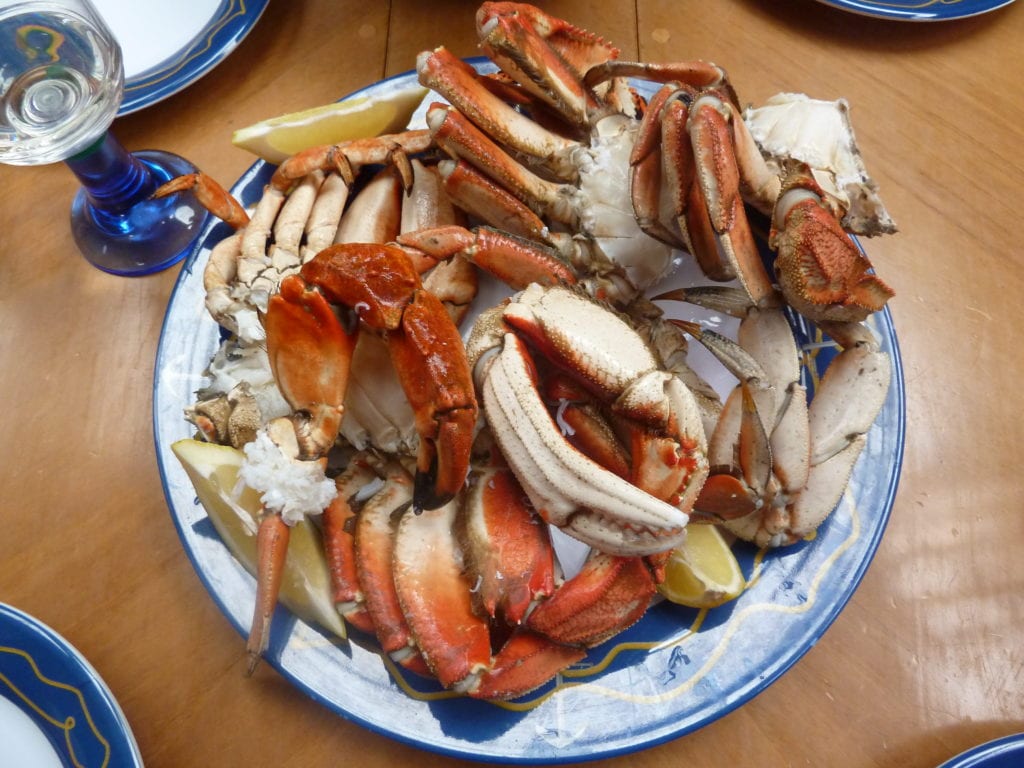Sustainable Gulf Island Crabbing On Board Tula
One of our favourite Gulf Island anchorages is Reef Harbour, near the bottom end of Saturna Island, about a three hour scenic sail from our Tsehum Harbour base. Situated between Cabbage and Tumbo Islands, the harbour is sheltered from most winds, other than a north to north-westerly breeze.
For much of the year Reef is deserted, and we like that. In summer, power boaters make the run down from Vancouver for nice beach-combing, hiking and of course, crabbing.
At the entrance to the harbour is a hole we have marked with the GPS and we usually drop our two crab traps in this hole. Last time there, in early October, we pulled in 41 Dungeness crabs.
Unfortunately, the commercial crab boats had been there before us, and most of the catch were undersized (less than 165 mm) and female, so they were sent back home to grow till next spring.
Types
Canada’s Gulf Islands have healthy populations of both Red Rock Crabs (Cancer productus) and the more favoured Dungeness Crabs (Cancer magister). Red Rockies are brick-red, have harder shells, and are more powerful and muscular than Dungies. We catch both in 50 to 110 feet of water. We find our best crabbing in eel-grass areas.

Our Equipment
On board Tula, we always carry two traps, one with a 60 foot and the other with a 110 foot lead-cored sinking line. We use heavy leather gloves for handling and a plastic bucket to put the catch in.
We find that crabs seem to prefer marine food such as salmon heads, fish carcasses, and broken clams and/or mussels with shells attached. The local supermarket sometimes gives us the skeletons of fish they have filleted. We have used chicken backs, canned tuna and cat food, but nothing works quite as well as Piscean remains!
We check our traps every two to four hours. Should we be fortunate enough to legally catch a surplus of crabs, we place them in our ‘crab hotel’ for later consumption. Once we had otters find our crab hotel during the night and steal our crabby guests, leaving behind only a few of the smallest claws! It seems that otters, too, enjoy crustacean delights!
Preparation
Michelle clasps both sets of legs (crab back facing up) and bends the two sets of legs together underneath the crab, twisting each set of legs in opposite directions, thus breaking off the group of legs with body meat attached.
Occasional shrieks and curses are heard from the cockpit as the crabs use their pincers in defence! These halves of the crab are quickly rinsed off in sea water. To avoid contracting one of three specific crab-borne diseases, it is important to wash the offal from the leg/body meat and to cook them promptly.

Cooking
On the stove, in a good sized pot, bring fresh water to a boil. Once boiling, toss in the crab halves; once the water resumes boiling, count down 4 minutes. Drain immediately and submerge in icy fresh water. Once cooled, drain the crab halves.
We often enjoy them in the cockpit with a fine New Zealand Sauvignon Blanc. Alternatively, they can be reheated later in the day with a black bean sauce (fermented black bean paste, white sugar and white wine heated together).
This time, the crab halves are broken into individual legs with a chunk of body meat; each section of the legs is slightly cracked in order to absorb some of the sauce and these chunks are tossed with the sauce till warmed through—a large wok is a good tool for this dish.
Another favourite and simple version is cooled, cooked crab, cracked and served with melted lemon butter. Mmmmm.....methinks it’s time to head back to Reef!
On Tula, we only catch what we can comfortably eat and we strictly observe the sport fishing regulations. Crabbing is one of the many pleasures of cruising around and sailing through Canada’s beautiful Gulf Islands. Would you like to experience this? Come join us.
